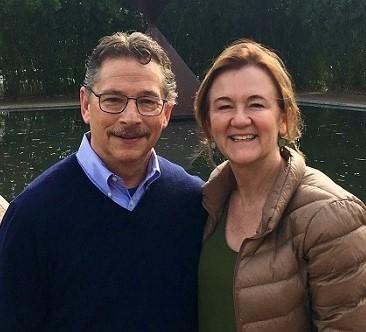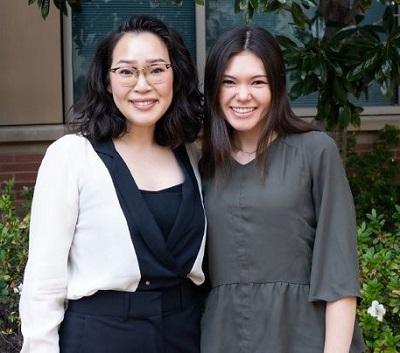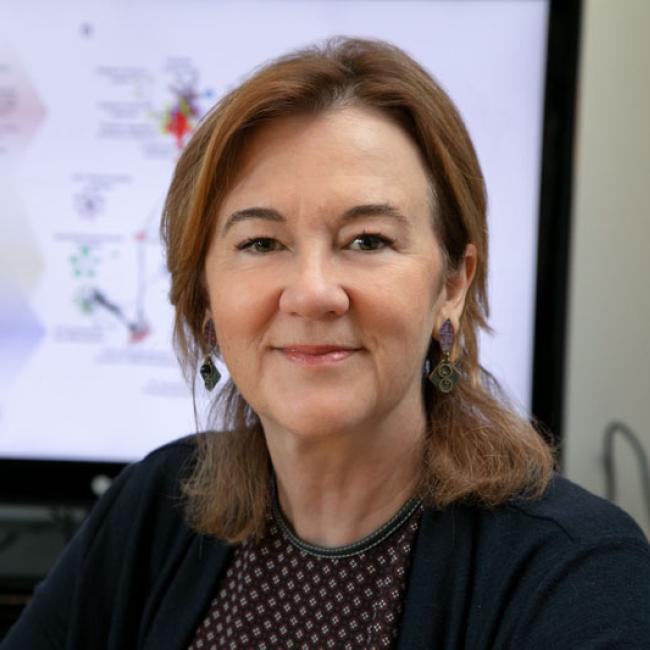
UCLA-led study uses base editing to correct mutation that causes rare immune deficiency
Key Takeaways
- A condition called CD3 delta SCID is caused by a mutation in the CD3D gene, which prevents the production of the CD3 delta protein that is needed for the normal development of T cells White blood cells that naturally fight against disease-causing invaders using specialized molecules, called receptors, on their cell surface. The receptors help T cells seek out and destroy virus-infected cells or cancer cells. T cells White blood cells that naturally fight against disease-causing invaders using specialized molecules, called receptors, on their cell surface. The receptors help T cells seek out and destroy virus-infected cells or cancer cells. from blood stem cells A type of tissue-specific stem cells found in the blood and bone marrow that can form various types of mature blood and immune cells. These cells play a crucial role in maintaining the body's blood supply and immune system by continuously producing new blood cells throughout a person's life. blood stem cells A type of tissue-specific stem cells found in the blood and bone marrow that can form various types of mature blood and immune cells. These cells play a crucial role in maintaining the body's blood supply and immune system by continuously producing new blood cells throughout a person's life..
- UCLA researchers showed that a new genome editing technique called base editing An ultraprecise form of gene editing that enables scientists to correct single-letter mutations in DNA. Unlike the gene editing platform CRISPR, which cuts both strands of the chromosome to make changes to DNA, base editing chemically changes one DNA base letter into another — an A to a G, for example — leaving the chromosome intact. base editing An ultraprecise form of gene editing that enables scientists to correct single-letter mutations in DNA. Unlike the gene editing platform CRISPR, which cuts both strands of the chromosome to make changes to DNA, base editing chemically changes one DNA base letter into another — an A to a G, for example — leaving the chromosome intact. can correct the mutation that causes CD3 delta SCID in blood stem cells and restore their ability to produce T cells.
- Base editing is an ultraprecise form of genome editing that enables scientists to correct single-letter mutations in DNA Short for deoxyribonucleic acid, DNA is a double-stranded molecule that serves as the genetic blueprint for living organisms. Composed of four chemical bases, DNA encodes the instructions necessary for protein synthesis and governs the development, function, and inheritance of traits in an organism. DNA Short for deoxyribonucleic acid, DNA is a double-stranded molecule that serves as the genetic blueprint for living organisms. Composed of four chemical bases, DNA encodes the instructions necessary for protein synthesis and governs the development, function, and inheritance of traits in an organism..
A new UCLA-led study suggests that advanced genome editing technology could be used as a one-time treatment for the rare and deadly genetic disease CD3 delta severe combined immunodeficiency.
The condition, also known as CD3 delta SCID, is caused by a mutation in the CD3D gene, which prevents the production of the CD3 delta protein that is needed for the normal development of T cells from blood stem cells.
Without T cells, babies born with CD3 delta SCID are unable to fight off infections and, if untreated, often die within the first two years of life. Currently, bone marrow transplant is the only available treatment, but the procedure carries significant risks.
In a study published in Cell, the researchers showed that a new genome editing technique called base editing can correct the mutation that causes CD3 delta SCID in blood stem cells and restore their ability to produce T cells.

The potential therapy is the result of a collaboration between the laboratories of Dr. Donald Kohn and Dr. Gay Crooks, both members of the Eli and Edythe Broad Center of Regenerative Medicine and Stem Cell Research at UCLA and senior authors of the study.
Kohn’s lab has previously developed successful gene therapies for several immune system deficiencies, including other forms of SCID. He and his colleagues turned their attention to CD3 delta SCID at the request of Dr. Nicola Wright, a pediatric hematologist and immunologist at the Alberta Children’s Hospital Research Institute in Canada, who reached out in search of a better treatment option for her patients.
CD3 delta SCID is prevalent in the Mennonite community that migrates between Canada and Mexico. “Because newborns are not screened for SCID in Mexico, I often see babies who have been diagnosed late and are returning to Canada quite sick,” Wright said.
When Kohn presented Wright’s request to his lab, Grace McAuley, then a research associate who joined the lab at the end of her senior year at UCLA, stepped up with a daring idea.
“Grace proposed we try base editing, a very new technology my lab had never attempted before,” said Kohn, a distinguished professor of microbiology, immunology and molecular genetics, and of pediatrics.
Base editing is an ultraprecise form of genome editing that enables scientists to correct single-letter mutations in DNA. DNA is made up of four chemical bases that are referred to as A, T, C and G; those bases pair together to form the “rungs” in DNA’s double-helix ladder structure.
While other gene editing platforms, like CRISPR-Cas9, cut both strands of the chromosome to make changes to DNA, base editing chemically changes one DNA base letter into another — an A to a G, for example — leaving the chromosome intact.
“I had a very steep learning curve in the beginning, when base editing just wasn’t working,” said McAuley, who is now pursuing an M.D.-Ph.D. at UC San Diego and is the study’s co-first author. “But I kept pushing forward. My goal was help get this therapy to the clinic as fast as was safely possible.”
McAuley reached out to the Broad Institute’s David Liu, the inventor of base editing, for advice on how to evaluate the technique’s safety for this particular use. Eventually, McAuley identified a base editor that was highly efficient at correcting the disease-causing genetic mutation.
Because the disease is extremely rare, obtaining patient stem cells for the UCLA study was a significant challenge. The project got a boost when Wright provided the researchers with blood stem cells donated by a CD3 delta SCID patient who was undergoing a bone marrow transplant.

The base editor corrected an average of almost 71% of the patient’s stem cells across three laboratory experiments.
Next, McAuley worked with Dr. Gloria Yiu, a UCLA clinical instructor in rheumatology, to test whether the corrected cells could give rise to T cells. Yiu used artificial thymic organoids, which are stem cell-derived tissue models developed by Crooks’ lab that mimic the environment of the human thymus — the organ where blood stem cells become T cells.
When the corrected blood stem cells were introduced into the artificial thymic organoids, they produced fully functional and mature T cells.
“Because the artificial thymic organoid supports the development of mature T cells so efficiently, it was the ideal system to show that base editing of patients’ stem cells could fix the defect seen in this disease,” said Yiu, who is also a co-first author of the study.
As a final step, McAuley studied the longevity of the corrected stem cells by transplanting them into a mouse. The corrected cells remained four months after transplant, indicating that base editing had corrected the mutation in true, self-renewing blood stem cells. The findings suggest that corrected blood stem cells could persist long-term and produce the T cells patients would need to live healthy lives.
“This project was a beautiful picture of team science, with clinical need and scientific expertise aligned,” said Crooks, a professor of pathology and laboratory medicine. “Every team member played a vital role in making this work successful.”
The research team is now working with Wright on how to bring the new approach to a clinical trial for infants with CD3 delta SCID from Canada, Mexico and the U.S.
Notes
This research was funded by the Jeffrey Modell Foundation, the National Institutes of Health, the Bill and Melinda Gates Foundation, the Howard Hughes Medical Institute, the V Foundation and the A.P. Giannini Foundation.
The therapeutic approach described in this article has been used in preclinical tests only and has not been tested in humans or approved by the Food and Drug Administration as safe and effective for use in humans. The technique is covered by a patent application filed by the UCLA Technology Development Group on behalf of the Regents of the University of California, with Kohn and McAuley listed as co-inventors.

